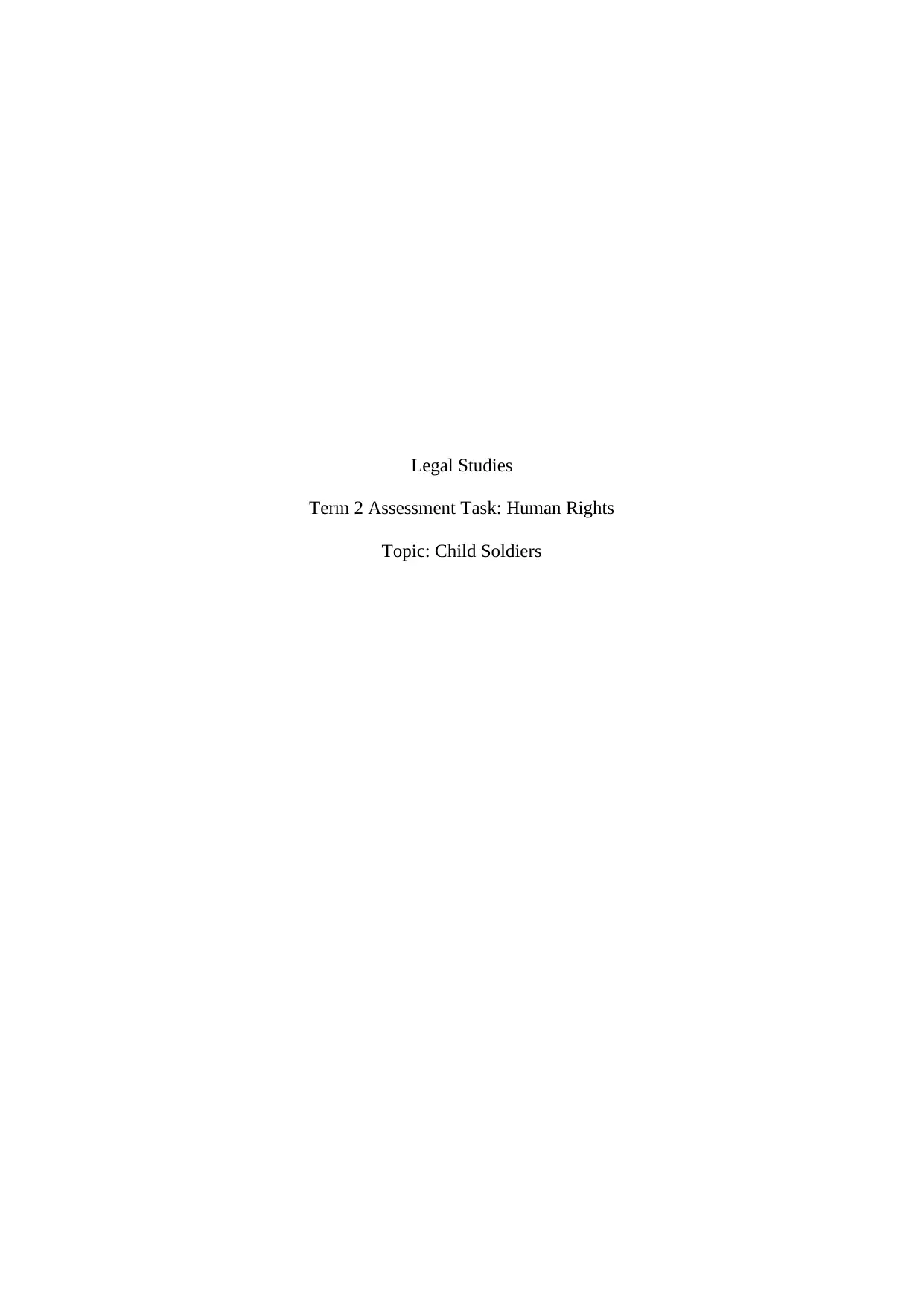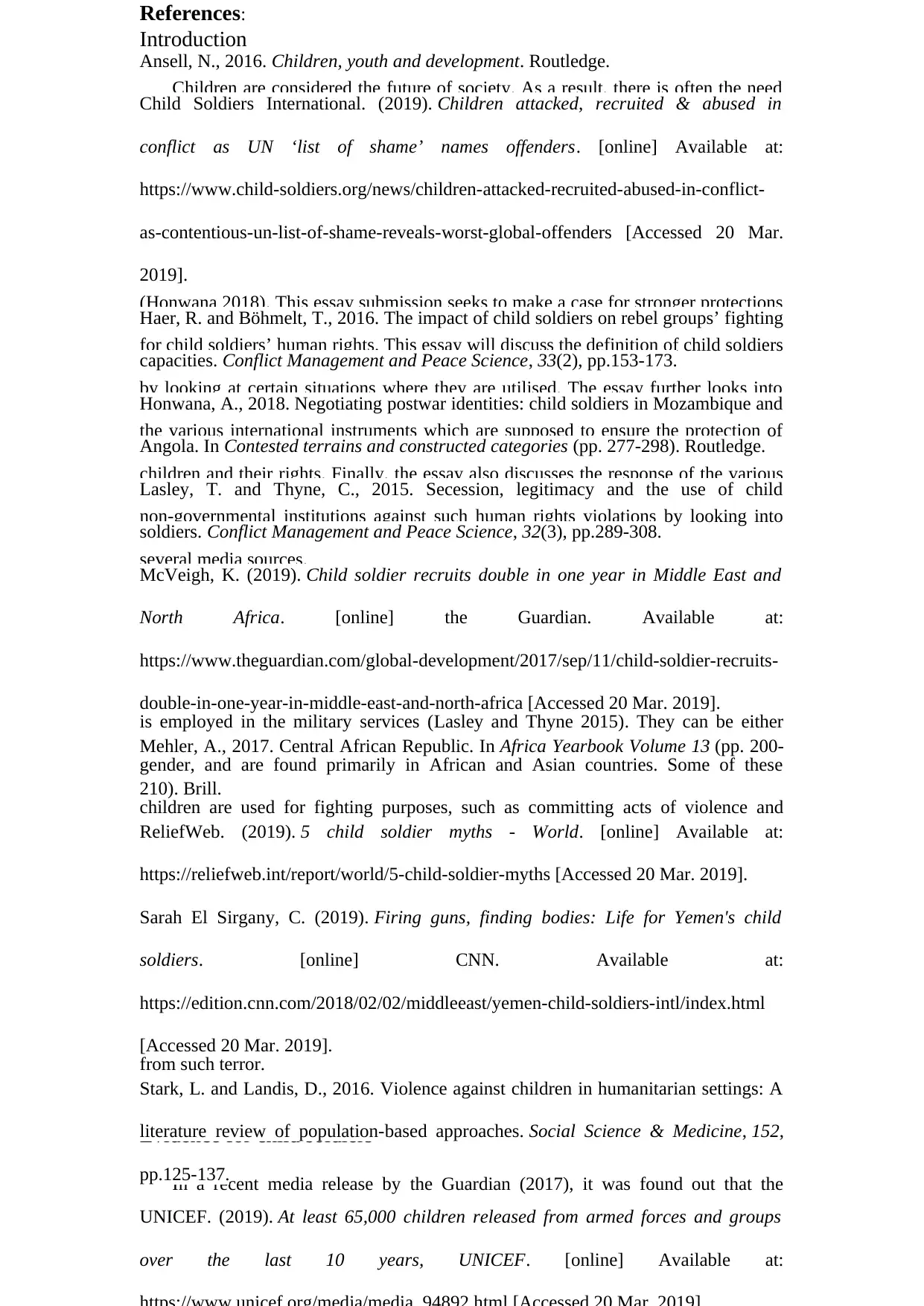Legal Studies Term 2 Assessment: Human Rights and Child Soldiers Essay
VerifiedAdded on 2023/04/08
|2
|584
|177
Essay
AI Summary
This essay examines the critical issue of child soldiers and their human rights, beginning with a definition of child soldiers as individuals under eighteen involved in military services, often in conflict zones. It highlights the various roles children are forced into, including combat, espionage, and sexual exploitation, emphasizing the devastating psychological impacts. The essay then explores the existing international instruments designed to protect children's rights, alongside the responses of non-governmental organizations and media outlets to these human rights violations. It references recent reports, such as the increase in child soldier recruitment in the Middle East and North Africa and the situation in Yemen, to illustrate the ongoing challenges and the urgent need for stronger protections. The essay underscores the importance of safeguarding children, who are the future of society, from the dangers of armed conflict and ensuring their proper development.
1 out of 2


![[object Object]](/_next/static/media/star-bottom.7253800d.svg)